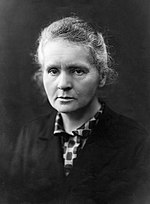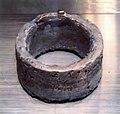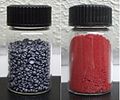Paris on 17 March 1956 from an acute leukemia linked to her exposure to polonium and X-rays. Irène was born in Paris, France, on 12 September 1897 and was...
26 KB (2,915 words) - 02:06, 12 November 2024
for her discovery of the elements polonium and radium, using techniques she invented for isolating radioactive isotopes. Under her direction, the world's...
110 KB (10,262 words) - 21:27, 11 November 2024
Plutonium (section Isotopes and nucleosynthesis)
to power some spacecraft. Plutonium isotopes are expensive and inconvenient to separate, so particular isotopes are usually manufactured in specialized...
139 KB (14,981 words) - 08:15, 9 November 2024
later wrote, "seemed to be whether Fermi had found isotopes of transuranian elements, or isotopes of the next-lower element, protactinium. At that time...
99 KB (12,607 words) - 04:05, 20 August 2024
The Dayton Project was a research and development project to produce polonium during World War II, as part of the larger Manhattan Project to build the...
37 KB (4,907 words) - 20:02, 10 May 2024
Praseodymium (section Isotopes)
isotopes lighter than 141Pr is positron emission or electron capture to isotopes of cerium, while that of heavier isotopes is beta decay to isotopes of...
37 KB (4,830 words) - 15:05, 16 September 2024
researched the half-life of polonium and devised methods of measuring alpha decay. This work led her to believe that radioactive isotopes could be formed from...
11 KB (983 words) - 03:02, 4 September 2024
the isotope nickel-63, held in a module the size of a very small coin. As it is consumed, the nickel-63 decays into stable, non-radioactive isotopes of...
25 KB (2,759 words) - 09:42, 5 November 2024
























